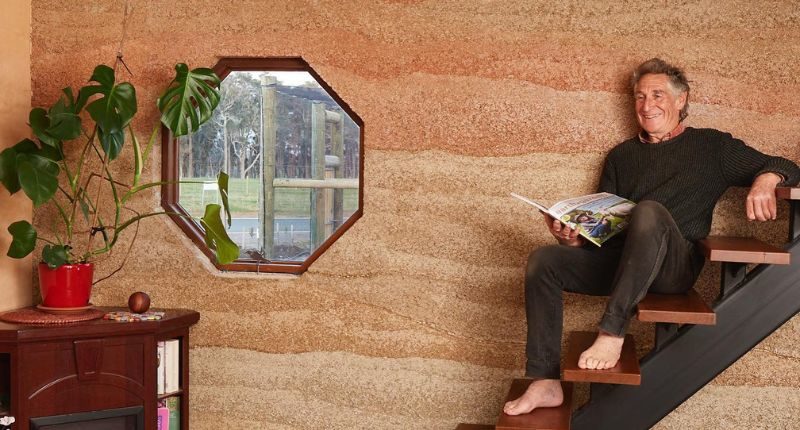
- The fireproof material is a superb insulator.
- Multiple hempcrete benefits include passive humidity regulation.
- Building costs do not exceed building with traditional concrete.
Houses made from hemp could be the next sustainable solution to Australia’s building supplies crisis.
Hemp concrete or ‘hempcrete’ is emerging as a greener alternative to traditional bricks and concrete. From domestic housing to city skyscrapers, plant-based materials such as hempcrete cut reliance on scarce resources and construct comfortable, healthy, and energy-efficient buildings.
The University of Adelaide’s Professor Rachel Burton, Researcher in the School of Agriculture, Food and Wine, said it has massive potential, and there is a lot of interest in building hemp houses.
“Hemp is an extremely good insulator. It has been recognised that it controls humidity and it provides a lovely living environment for humans.
“Hemp is fire retardant, so ideal for Australian conditions and other places that are hot and dry like California.” Professor Burton says.

How is hempcrete made?
Industrial hemp is a type of cannabis that does not have high levels of THC – the chemical that triggers the “high” associated with marijuana.
It is a good crop alternative for farmers and well-suited to Australia’s warm and dry climate.
Fibres from inside the plant’s stem can be mixed with water and lime to produce a concrete-like mixture – hempcrete – which can be used to create bricks. Alternately, the fibres can be used in pre-cast panels for sound-proofing or insulation.
OzHemp is a Western Australian company which supplies their Tradical® Hempcrete construction materials to home builders and developers looking for a sustainable solution. OzHemp are currently the only supplier of BCA (Building Codes of Australia) certified hempcrete products and installation methods in Australia and New Zealand for housing and commercial construction.
OzHemp Operations Manager Shane Chandran says, “Our hempcrete is a mixture of lime, hemp hurd and water that will petrify into a bio-composite substitute. This non-structural, lightweight material can be used to form solid thermal walls of framed buildings and provide an excellent breathable insulation wall form. The mixture can be cast in situ or mechanically sprayed on.”
Why build with hempcrete?
Shane Chandran says there are many advantages to building with hempcrete.
Hempcrete:
- is a natural building material that is sustainable and recyclable,
- provides excellent heat and sound insulation,
- does not burn or ignite – rated BAL-FZ for bushfire prone areas,
- is pest (termites, rodents) and mould resistant,
- can sequester carbon – an average size hempcrete house will remove about 20 tonnes of CO2 from the atmosphere over its lifetime,
- is vapour permeable and an efficient moisture regulator,
- is hypoallergenic and contains no Volatile Organic Compounds (VOCs).
A natural air conditioner
Due to its superior thermal properties and strong moisture-regulating effects, hempcrete contributes to a comfortable and healthy indoor climate.
“The ability for the walls to breathe allows for self-regulation of humidity within the building in general, acting as a climate control and often reducing the need for air conditioning” Chadran says.
Hempcrete’s ability to absorb moisture stops condensation forming on the surface of the wall and regulates humidity to a healthy level of between 40-60 per cent.
Shane Chadran says “The vapour permeability of hempcrete is an advantage as it maintains the necessary humidity balance for a long-lasting timber.”
“The vapour permeability of hempcrete is an advantage as it maintains the necessary humidity balance for a long-lasting timber.”
Shane Chandran, OzHemp Suppliers
A hempcrete dreamhouse
A hempcrete ecovillage
This bespoke 100m2 hempcrete timber home was built by Homes by Nature in the Witchcliffe Ecovillage in Western Australia’s South West. Witchcliffe is set to become one of the world’s first fully integrated villages to be self-sufficient in renewable energy, water and fresh food.
The home’s key energy ratings:
- Tradical® Hempcrete walls,
- Carbon negative: -15%,
- Solar system: 6.6kW,
- Rainwater tank: 54,000L,
- Achieving a natHERS thermal efficiency rating of 8.4/10.
The cost of hempcrete
Building with hempcrete should cost no more than it does building with conventional materials, but it will not be significantly cheaper either.
Shane Chandran says: “The cost of a Tradical® Hempcrete project can depend on many factors, such as the size and location of the build and the method of hempcrete construction.
“It costs marginally more to build with Tradical® Hempcrete than with brick veneer or double brick, but the resulting build will be significantly more energy efficient.
“In regard to hempcrete, the fixed costs are the materials – hemp hurd and lime binder. The variable cost is in the labour and method of construction” he says.
University of Adelaide’s Professor Burton says, “There are still many barriers to producing hempcrete but hemp houses and other plant-based products have huge potential to change how we build, because people are looking for more environmentally friendly ways to reduce reliance on scarce resources.”



















